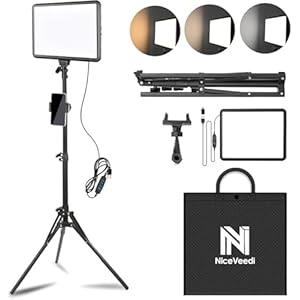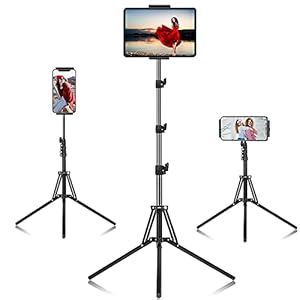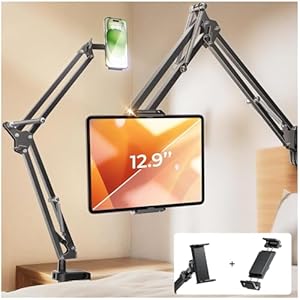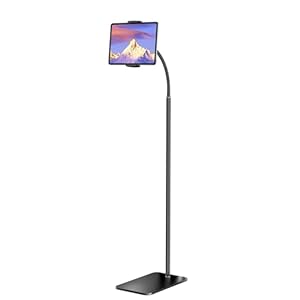Production Photos: Michelle Grace Hunter
As with most high-stakes musical theatre, there are normally three audio operators who could each step into each other’s roles if required. Beetlejuice The Musical’s No. 2 audio operator, Ghio De Oliveira, is first cab off the rank to step into Anthony Craythorn’s shoes behind the Digico SD7 Quantum. But mostly her role is as sound effects operator. Now, you may think this would be a cushy gig. Not so. Ghio has over 250 FX cues that need manually triggering out of QLab. 250! Beetlejuice The Musical is a larger-than-life (or death?) romp that has little regard for nuance. It’s more like a live-action Looney Tunes cartoon. So FX play an important role. Get the cue wrong and it jars… like the sound of an anvil landing moments after impact. Such is the precision required, Ghio controls a PTZ camera to zoom in on the action. When she’s not toggling through cues, she’s hitting presets on the PTZ controller to ensure her attention is properly focused. Bam. Snap. Wallop. Full on.
If being the Sound Effects Operator on a big show like Beetlejuice The Musical would keep you awake at night then stepping into those aforementioned shoes of Anthony Craythorn would probably tip you over the edge. It’s intense.
First up, it’s a full desk: 20 in the cast (with six principals), and a 10-piece band. Beetlejuice The Musical is rapid fire. There’s no let-up. Anthony is constantly throwing faders. There’s certainly no time to follow along with the score, it all has to come second nature. For readers unfamiliar with musical theatre audio, you need to understand that intelligibility is paramount. But with potentially 20-plus open omnidirectional lavalier microphones, you’re fighting an existential battle with clarity. So every mic that can be muted must be muted. What’s more, any fader that doesn’t need to be pushed up remains down. Which means that in the type of fast-paced patter songs and snappy dialogue of Beetlejuice The Musical, Anthony is performing a type of digital gymnastics.
Like most musical theatre, Beetlejuice The Musical is heavily automated. Each snapshot provides a tweaked internal band mix (Anthony will always have a single Band group fader to hand in the DCA section of the console but rarely needs to dive to a Band fader layer to tweak the balance or EQ), and switches the DCA faders to reflect the current complement of performers on stage. You might think the eponymous Beetlejuice (played by an utterly bonkers Eddie Perfect) would stick ’n’ stay on DCA Fader 1 whenever he’s on stage. Not so fast. Most operators will prefer to have the first performer to sing/talk in that snapshot to be on Fader 1. More mental/digital gymnastics.
It’s exhausting to watch Ghio and Anthony in action. And inspiring. Not only do they hit the cues, the show sounds excellent.
Ghio De Oliveira at her sound effects station, including PTZ camera controller.

Meyer Sound Leopard carry the bulk of the sound reinforcement load. The PA was supplied by JPJ Audio.
A SHOW TO ADD-MEYER
That consistently excellent performance starts way back in planning. Beetlejuice The Musical Sound Designer is Peter Hylenski. Peter’s attention to detail and his willingness to fine-tune his approach according to the requirements of the show are well known. He won a Tony award for Moulin Rouge! The Musical and the Broadway outing of Beetlejuice The Musical was also nominated.
Peter Hylenski is a fan of Meyer Sound loudspeakers, basing his design around a large inventory of Leopard compact linear line array loudspeakers. But coverage is key, so a massive quantity of Meyer Sound fill and delay loudspeakers complement the main left/right hangs.
Rental company, JPJ Audio, won the Australian Beetlejuice The Musical gig and carries a lot of Meyer Sound just for such an occasion. Shelly Lee takes up the Hylenski mantle as the Associate Sound Designer, working with the Hylenski team to ensure the vision is realised at the massive (1750-cap) Regent Theatre in Melbourne before tackling a very different venue in Abu Dhabi later this year, then Singapore.
Shelly Lee walks us through the design: “Coverage is everything – get it as even as possible, then you can focus on the art. Otherwise, you’re wrestling with too much volume at the front, not enough at the back, or cold spots on the sides. That’s why we have Meyer Sound Ultra X-22 side fills here — the main speakers are angled in slightly, so the side fills cover where the main pattern drops off, filling in the 6dB down points. They’re not doing much, but just enough to keep the energy up.
“We’ve also have Meyer Sound UPQ-D3 down-fills — those are more about imaging than coverage, because the main array covers fine. Down-fills help pull the stage sound in so it’s not too wide. Above the proscenium arch we’ve got more Leopards for a central image upstairs. Left and right arrays are for power; the central speakers are for imaging.
“There are two rows of delays in the stalls both Meyer Sound UP-Juniors, as well as a row of Meyer USW-112P delay subs mounted to the under-balcony – which are great but these subs are often not possible because of sightlines. In the balcony we have a delay truss with 4 x Meyer Sound UPQ-1P and 4 x Meyer Sound 750-LFC fundamentally performing the same role as the stalls delays but this time extending the coverage to rear of the balcony.
“The surround speakers are for effects and some reverb and the only speakers in the rig that are from d&b (E8s). There are side and rear surround speakers in both the stalls and balcony plus the addition of delayed rear surrounds and delayed side surrounds in the stalls. These extra surrounds are to help carry the effects into the middle of the stalls and are delayed back to their respective speakers, ie., delayed-rears to rears and delayed-sides to sides. It really helps the audience have a cinematic experience.

Meyer Sound UPJuniors are tasked with delay duties.

The Meyer Sound sub array. A pair of 1100-LFC subs handle the bottom octave.

“The sub arrays are interesting. I’ve only ever seen Hylenski do them this way. Subs are tricky to get even coverage. With a standard left/right sub setup, you often get a ‘power alley’ down the middle, then lobing either side – you can have seats with almost no sub, and others where it’s pounding your chest. Some prefer placing all subs in one location for ease of time alignment – because subs are omnidirectional, it’s hard to time-align them when they’re spread out. You might see all the subs on one truss above the proscenium for coherence, though that can lose coupling and power, which is an important factor for Beetlejuice The Musical. Hylenski’s vertical sub arrays (5 x Meyer Sound 900-LFC per side) are impressive, giving punch and directionality due to their cardioid configuration.
“On this show, we also have additional infra-subs, Meyer Sound 1100-LFC, for extra low end. We don’t have anything in front of the stage because of the orchestra pit – in an attempt to keep as much away from the instrument microphones as possible.”
PARALLEL UNIVERSE
Peter Hylenski’s influence extends beyond the loudspeaker design. He specifies the microphone selection for the cast and orchestra. He also specifies the mix setup, including effects and processing. Anthony Craythorn picks up the story:
“We’ve got a Digico SD7 Quantum on the show. We’re running an optical loop with a few SD-Racks backstage to get everything in and out of the console.
“Most of the channel processing is done on Waves SoundGrid server — there’s a Waves insert on all the principal vocal channels and all the band inputs.

Audio operator, Anthony Craythorn, in the zone, mid performance.

Waves CLA-76 compression is over each of the principal’s parallel channel, which is ~10dB down compared to the main channel.

“The Waves processing is mainly about EQ and compression. Peter Hylenski loves the Scheps 73 EQ, modelled on the Neve 1073, as a tonal EQ — not being too precise, just shaping the tone. We’re also working with the Waves Silk Vocal plug-in, the live version. It seems to help knock out some of the harsh high-end frequencies, acting mainly as a de-esser.
“Each principal vocal channel is also parallel-compressed. We run a Waves CLA-76 compressor on a parallel channel, which is mixed in with the main channel but 10dB quieter.
“Parallel compression isn’t, of course, unique to Hylenski but he’s pioneered this approach to vocals in musical theatre. Essentially, the main principal channel has minimal compression – just enough to catch the top of the dynamic range when singing – while the parallel channel’s compressor kicks in as soon as they hit the lower level of their singing range. This combination fundamentally reduces the dynamic range between the singing and the dialogue by raising the level of the dialogue.
“I don’t ride the parallel channel, the two are grouped when I ride the control group fader – the relationship between the two is fixed. The idea is to set it up here and then leave it, so when we get into those high-gain singing moments, it starts compressing.
“A lot of the channel processing is through Waves, but we also use parallel compression on the buses. For example, our drum groups have a ‘Drum Left/Right’ and a ‘Drum Comp Left/Right’. Similar approach to the overall orchestra sum groups — a touch of SSL compression and some shaping, but nothing dramatic. Everything’s done in stages, pretty subtly.
“For reverbs, we’re running a TC System 6000 for our vocal reverbs and two Bricasti M7s for the band reverbs. It’s all pretty subtle, mostly short reverbs. There are only a few moments where we use a longer reverb on vocals, and even then it’s a quite produced, short-ish reverb.”
There are two rows of delays, including a row of delay subs mounted to the under-balcony – which are great but often not possible because of sightlines
(function($){
function bsaProResize() {
var sid = “86”;
var object = $(“.bsaProContainer-” + sid);
var imageThumb = $(“.bsaProContainer-” + sid + ” .bsaProItemInner__img”);
var animateThumb = $(“.bsaProContainer-” + sid + ” .bsaProAnimateThumb”);
var innerThumb = $(“.bsaProContainer-” + sid + ” .bsaProItemInner__thumb”);
var parentWidth = “970”;
var parentHeight = “450”;
var objectWidth = object.parent().outerWidth();
// var objectWidth = object.width();
if ( objectWidth 0 && objectWidth !== 100 && scale > 0 ) {
animateThumb.height(parentHeight * scale);
innerThumb.height(parentHeight * scale);
imageThumb.height(parentHeight * scale);
object.height(parentHeight * scale);
} else {
animateThumb.height(parentHeight);
innerThumb.height(parentHeight);
imageThumb.height(parentHeight);
object.height(parentHeight);
}
} else {
animateThumb.height(parentHeight);
innerThumb.height(parentHeight);
imageThumb.height(parentHeight);
object.height(parentHeight);
}
}
$(document).ready(function(){
bsaProResize();
$(window).resize(function(){
bsaProResize();
});
});
})(jQuery);
(function ($) {
var bsaProContainer = $(‘.bsaProContainer-86’);
var number_show_ads = “0”;
var number_hide_ads = “0”;
if ( number_show_ads > 0 ) {
setTimeout(function () { bsaProContainer.fadeIn(); }, number_show_ads * 1000);
}
if ( number_hide_ads > 0 ) {
setTimeout(function () { bsaProContainer.fadeOut(); }, number_hide_ads * 1000);
}
})(jQuery);
SPIRIT OF THE MIX
The resulting mix sounds very refined. As an audience member you would have no idea about how frantic the jobs of Anthony and Ghio really are. Intelligible, transparent, oodles of headroom, and punchy when it needs to be.
Shelly Lee has a firm perspective after decades in the hot seat and in audio design: “The audience doesn’t care about the technology, they care about how they’re moved. Whether they’re laughing themselves silly, or whether they’re crying, or whether they’ve got those goosebumps. They’re the things that are really important, and what we should focus on rather than performing a theoretically perfect mix. People don’t remember the fact the flute was 2dB louder in a particular bar of music but they will remember how they feel about the show. It’s really important for us as audio people to always remember how well are we connecting to the audience rather than how perfect is it as a piece of art.”
Saying that, great gear helps!
“The Meyer PA is very transparent,” confirms Anthony Craythorn. “It’s inspiring to mix on because you hear every detail and every little adjustment you make. That said, you have to be careful, because every little fader move translates into a full-frequency level adjustment. That’s not always the case. Some other PAs, you feel like you’re pushing into it, and it’s not really getting louder. It might be getting muddier. You might be pushing for clarity but it’s not coming through. Meanwhile, the Meyer Sound PA just seems to be very transparent front to back, which makes it fun to operate on.”

Ghio, Shelly and Anthony at front of house, Regent Theatre, Melbourne.
Shelly Lee continues: “I also find that the various Meyer Sound components marry together really well. And just really consistent across the entire dispersion pattern. A lot of other systems, you’ll stand in the centre and it’s lovely but when you stand to one side things change. With a Meyer Sound design I know every seat, no matter what speaker’s coverage it’s in, will have a consistent sound. This assists with an improved stereo response as well. More seats are enjoying stereo – there’s a much wider spread.”
“Absolutely,” agrees Anthony. “I get a big sense of a stereo image at the back of the house here, which is pretty rare – considering I’m two rows of delays back, to still feel that sense of imaging back here is quite impressive. Whereas some other systems you might not get that sense or as soon as you move your head one way, suddenly your image is pulled across to one side of the PA. The Meyer Sound design just feels like it provides a more cohesive image. Beetlejuice The Musical isn’t a huge stereo show, nothing’s particularly hard-panned, but you do get that sense of space, which is nice. It gives me confidence that what I’m doing here is translating everywhere else. I’m not just pushing faders around for my benefit, the audience in the front rows are going to be getting the same experience.”


Sennheiser packs and MKE1 capsules. Principals are double-miked/packed.

The racks of Sennheiser Digital 6000 transmitters and Meyer Sound Galaxys.

Hats kill the sound of miniature capsules in the hairline. Which explains this hat-mic setup.
The post Sound for Beetlejuice The Musical appeared first on AudioTechnology.
Trending Products

Video Conference Lighting Kit, Ring...

15W LED Video Light Kit

Desk Ring Light for Zoom Meetings &...

SAMHOUSING Ipad Tripod Stand, with ...

LISEN Tablet Stand

LanPavilion iPad Stand, Adjustable ...

DJI Osmo Mobile SE, 3-Axis Phone Gi...

2pcs Original Joystick Parts for Zh...

hohem iSteady M7 Gimbal

